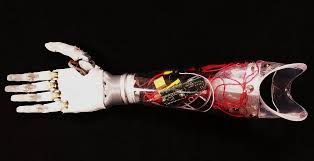After Garrett Anderson lost his arm below the elbow in Iraq in 2005, he could never tell how much pressure he was applying with his prosthetic hand. Sensory feedback like this is not possible with prosthetic hands making it impossible to feel how much pressure is being exerted.
He began testing prototypes that let him feel again. Anderson started working with Psyonic, a startup company in the University of Illinois Research Park. It is expected that Psyonic will begin to provide commercial prostheses with pressure sensing in the next year. After that, Psyonic will provide commercial prostheses with sensory feedback.
Psyonic’s rubber and silicone processes use machine learning for control. Anderson’s Psyonic hand is a myoelectric prosthesis which uses electrical signals generated by the other muscles in the arm. “When Anderson thinks about moving his hand, electrodes in the prosthetic hand measure the electrical signals from his forearm, while pattern-recognition software detects if he wants to open or close his hand, pinch his fingers together or make a fist, for example.”
For the future, researchers are looking to use small, pill-shaped implants to insert deep in the muscle. This would allow for more accurate control. They are also developing a technique to trick the brain into thinking the sensations are coming from the missing hand.
To read the full story, click here.

